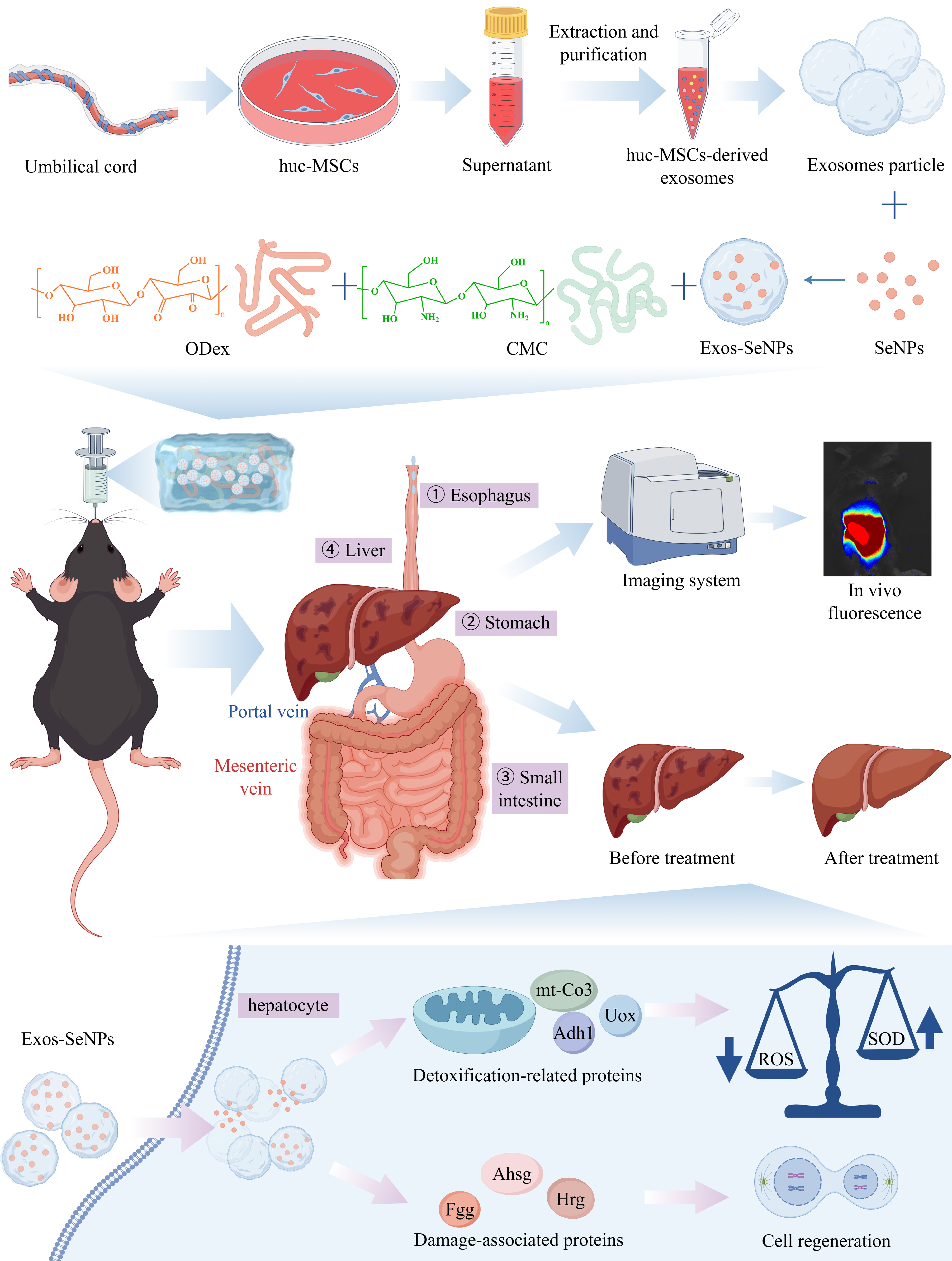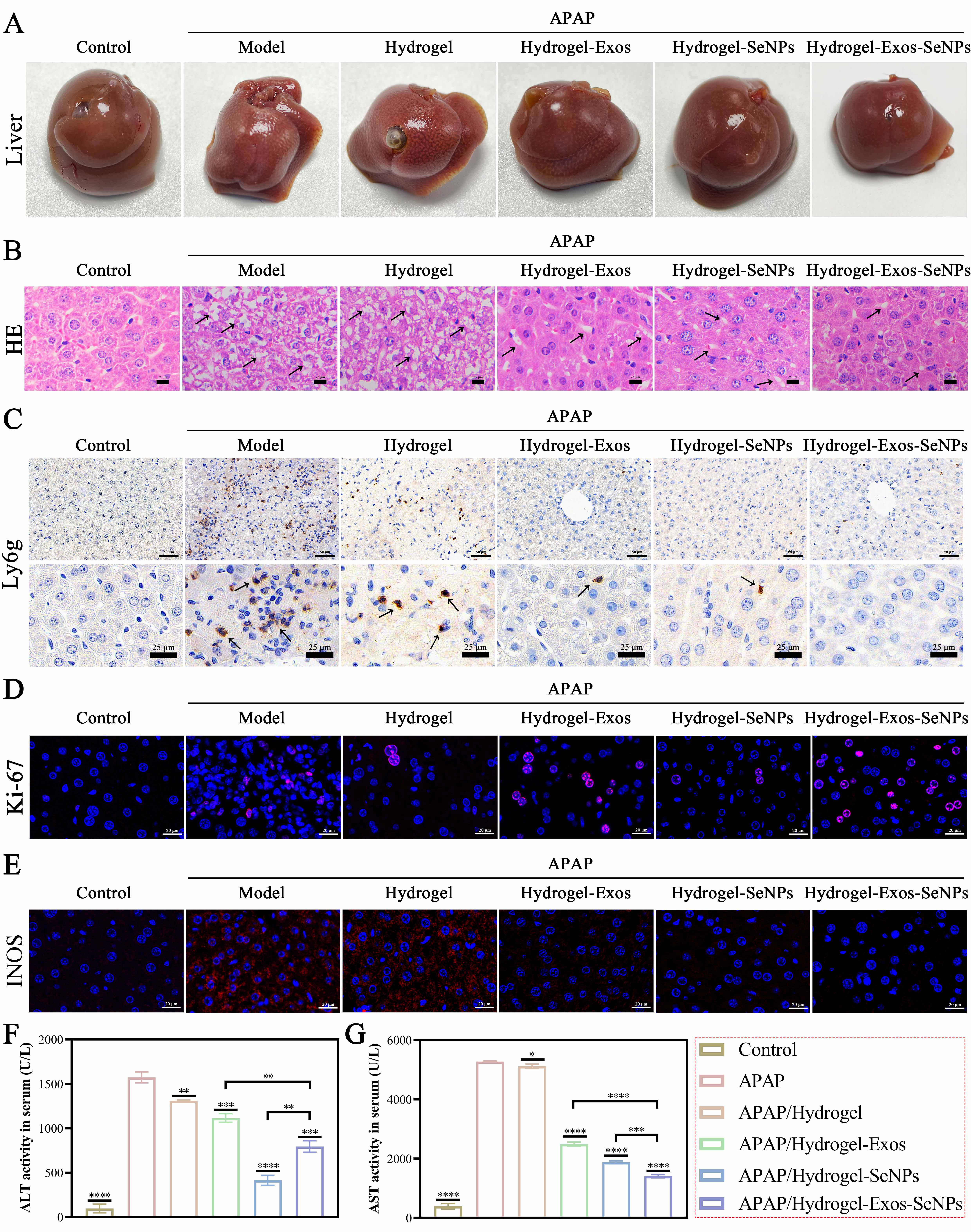
SeNPs-encapsulated MSCs-Exos significantly mitigate acute liver injury via oral hydrogel route
Yue Zhang1, Qiuxia Zheng1, Zongbin Sun1, Jia Yao2.
1First Clinical Medical College, Lanzhou University, Lanzhou, People's Republic of China; 2Key Laboratory of Biotherapy and Regenerative Medicine, First Hospital of Lanzhou University, Lanzhou, People's Republic of China
Lanzhou University.
As one of the most serious health issues worldwide, acute liver injury (ALI) is severely restricted in treatment due to the lack of specific drugs. Given that the key pathological characteristics of ALI is acute oxidative stress and liver cell function impairment, intervention can also be targeted at these aspects. To address this challenge, this study developed an innovative therapeutic approach by integrating selenium nanoparticles (SeNPs), which exhibit excellent antioxidant properties, with mesenchymal stem cell-derived exosomes (MSCs-Exos) that demonstrate strong regenerative potential. To enhance the stability of SeNPs and reduce the risk of rapid in vivo clearance of MSCs-Exos, this study utilized a hydrogel system composed of carboxymethyl chitosan (CMC) and oxidized dextran (ODex) as a delivery vehicle to ensure efficient and stable drug encapsulation. Building on this, a stable delivery platform based on a hydrogel drug delivery system (Hydrogel-Exos-SeNPs) was designed and constructed in this study.
Initially, our study demonstrated that Hydrogel-Exos-SeNPs did not induce significant cytotoxicity, alterations in serum biomarkers, or pathological damage to vital organs. The experimental results demonstrated that Hydrogel-Exos-SeNPs exhibited remarkable stability. Following oral administration, a gradual increase in in vivo fluorescence signals was observed from 3 to 24 hours post-treatment, indicating sustained release of Exos-SeNPs. This feature provides a temporal advantage for effective intervention in acute liver injury. Moreover, upon efficient internalization by hepatocytes, Exos-SeNPs not only suppressed the generation of reactive oxygen species (ROS) but also modulated the production of malondialdehyde (MDA). This indicates that Hydrogel-Exos-SeNPs may exert antioxidant effects throughout the initiation, propagation, and resolution phases of oxidative stress. Further in vivo experiments demonstrated that Hydrogel-Exos-SeNPs effectively modulated the expression of proliferation-related markers, including PCNA and Ki-67. This regulatory effect was primarily attributed to the regenerative capacity of the Exos. In addition, the transcriptome sequencing results demonstrated that Hydrogel-Exos-SeNPs facilitated liver cell regeneration and restored liver function by upregulating the expression of mitochondrial and detoxification-related genes while downregulating the expression of damage-associated genes. Notably, Hydrogel-Exos-SeNPs not only preserve the regenerative capacity of Exos but also maximize the antioxidant characteristics of SeNPs. This synergistic interaction further elevates their biological performance, which is a combo treatment refers to one plus one is greater than two. The Hydrogel-Exos-SeNPs demonstrated notable therapeutic efficacy and considerable application potential for the oral treatment of ALI, highlighting their significant clinical translational value.


This work was supported by Grant(s) from the National Natural Science Foundation of China (32160230), Talent Innovation and Entrepreneurship Project in Chengguan District, Lanzhou City, Gansu Province (2022RCCX0024)..
[1] Mesenchymal stem cell
[2] Exosomes
[3] SeNPs
[4] Hydrogel
[5] Acute liver injury